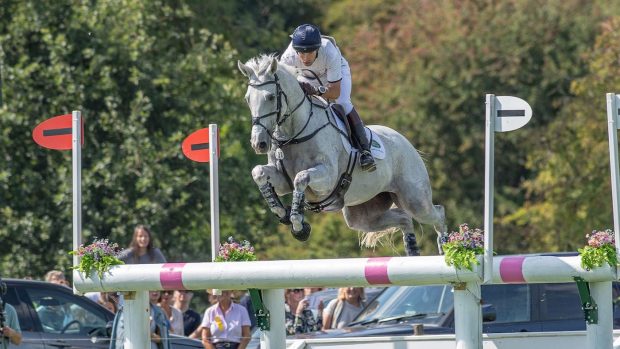Recurrent airway obstruction (RAO) is a disease that affects the horse’s respiratory system. It used to be called chronic obstructive pulmonary disease (COPD) but most vets now prefer the term RAO to avoid confusion with a similar condition in humans. The colloquial term is ‘heaves’, as difficulty in breathing causes the horse’s flanks to heave.
There is also a disease called ‘summer pasture-associated obstructive pulmonary disease (SPAOD)’, which produces the same symptoms, but which is linked to different causes. Up to now, SPAOD has been seen mainly in the USA, but cases are now being seen more frequently in the UK. One explanation may be changes in global weather patterns.
Both RAO and SPAOD affect the smaller airways of the lungs. They result in the production of excess mucus and the thickening of the airway walls, which affect the animal’s breathing.
RAO is caused by repeated exposure to dusts and moulds, notably in bedding and forage. SPAOD is linked to dust and pollens to which the horse is exposed in summer, particularly at times of heat and high humidity.
Both diseases can affect any type of horse or pony, but the keys are the environment in which they are kept, and repeated exposure to the causes, rather than any other predisposition. All breeds and types are at risk, but because they are caused by repeated threats to the respiratory system rather than a single episode, sufferers are typically aged seven and over.
RAO is categorised as a disease in horses that are regularly stabled for long periods – even stabling overnight can be a problem once the respiratory system has been sufficiently challenged. It can occur at any time of year, whereas SPAOD improves as weather conditions change.
Either disease is something no horse or pony owner can afford to ignore. Research has shown that in the UK, up to 80% of horses who are stabled all or part of the time have some degree of airway inflammation – and mild cases often worsen into full-scale RAO as their defences are weakened.
The first signs that a horse is suffering from a respiratory problem is a regular cough, usually when the horse is exposed to dust or mould spores or when exercised. Coughing is the horse’s natural attempt to shift mucus.
Unless the causes are removed, the horse will then usually show signs of nasal discharge and a reduced tolerance to work — for instance, he will not be able to carry out faster work without becoming more breathless than would be expected. In the very worst cases, a horse or pony will have difficulty breathing whenever he is exposed to dust or other causes.
In many ways, these diseases are similar to human asthma – it isn’t so much a case of effecting a cure as removing the threats that cause the problem.
The Animal Health Trust (www.aht.org.uk) advises:
- Keep horses suffering from RAO turned out as much as possible – ideally, all the time. When looking after horses with SPAOD, it is best to discuss a management regime with your vet
- If stabling is essential, follow a minimal-dust regime and make sure your horse’s stable airspace is not shared with one where this regime is not used. Ensure that all bedding, feed and forage is dust-free – good ventilation is also vital for respiratory health
- Feed your horse at floor level, as lowering his head will help to clear secretions from the lungs
- Don’t groom or muck out your horse while he is still in his stable. This rule applies to all animals, not just those with respiratory problems
- Follow the minimal dust rule when travelling. Ensure good ventilation and tie the horse up so that he is still able to lower his head
- If you need to stable your horse away from home, such as at a competition, follow the same regime. If necessary, ask your vet about medication
- Don’t work your horse in dusty schools
|





